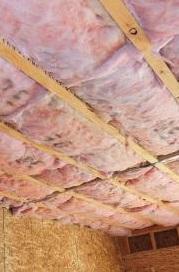
Insulation
Insulating Floors over Unconditioned Space
Floors above unconditioned basements and crawlspaces can be insulated to high levels using batt or spray foam insulation, or a combination. The insulation must be in full contact with the continuous air barrier, which separates the house from the unconditioned space below. When basements or crawlspaces are uninsulated, the subfloor, which is typically OSB or plywood, serves as the air barrier.
It’s a best practice in all climates to connect the crawlspace or basement to the house by air sealing and insulating along the walls of the basement or crawlspace. However, there are circumstances where the floor above a basement or crawlspace serves as the thermal boundary. These floors above unconditioned space can be a prime source of heat loss and result in uncomfortable cold floors. Insulating and air sealing to or above code requirements helps avoid these issues.
Before insulating, any holes around plumbing wiring, etc. in the subfloor must be sealed. Batt insulation should be installed so that it fits tightly between the floor joists with no gaps, compressions, or voids. Metal staves or wire can be used to keep the batts in continuous contact with the subfloor. Spray foam insulation can be used as a high-R alternative to batts. To qualify as an air barrier, open-cell or closed-cell foam must have a finished thickness greater than or equal to 5.5 inches or 1.5 inches, respectively.